If you live in New York, even if you’re not Jewish, you’re probably familiar with these little deformed cookies haphazardly stacked in plastic boxes and sold in an assortment of mystery flavors – the rugelach. To the neophyte, they don’t inspire much confidence, but did you know that these dry and heavy lumps of dough are the degenerate cousins of the French croissant?
It all begins in Central Europe, with the Austrian kipfel, (sometimes spelled kipferl), a traditional monastery pastry baked for Easter. The word kipfel originates from a term in Old High German that refers to the horn-shaped stanchions of a cart. While there are known mentions dating from the 11th and 13th centuries, they don’t come with descriptions or recipes. Only a few centuries later is kipfel described as a crescent-shaped roll made of yeast dough, popular for coffee breaks and breakfasts, particularly in Austria. Neighboring countries soon come up with their own versions, which they name after the original or after rog, the Slavic word for horn: kifli in Hungary; kifla in Bulgaria, Croatia, and Serbia; rohlík in Czech Republic; rogalik in Poland, Ukraine, and Russia. (And yes, they reach Paris in the mid-19th century, where they become known as croissants and evolve into a laminated dough pastry a few decades later.) Some versions contain fillings made of ground walnuts, poppy seeds, dried fruits, or preserves, and to this day almost every country in Central or Eastern Europe boasts its own version of a crescent-shaped yeast dough pastry with a sweet filling.
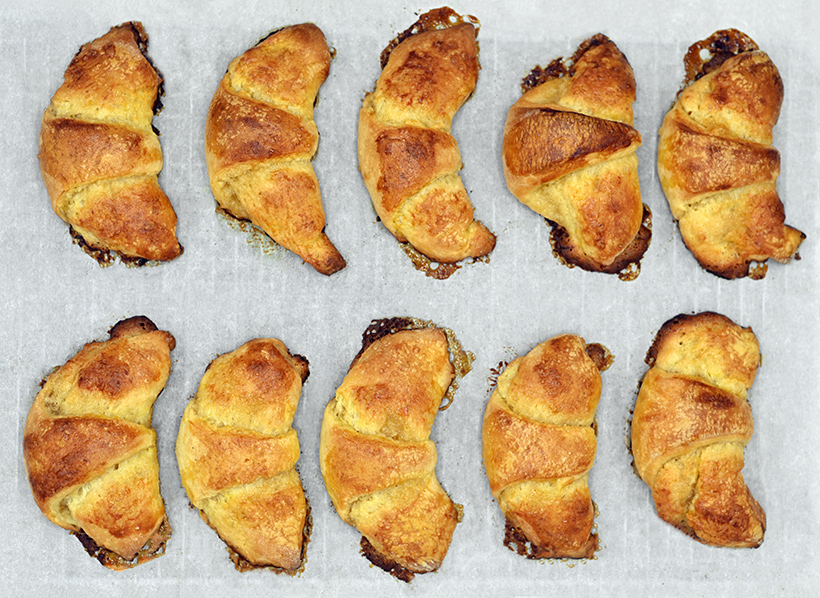
With the Eastern European Jewish emigration in the late 19th century and early 20th century, the kipfel comes to America, the land of quantity over quality. Nobody has time for a yeast dough, everything has to be prepared quickly, and everyone’s willing to pretend that the result tastes exactly the same. By the 1940s, according to Gil Marks’ Encyclopedia of Jewish Food, sour cream and cottage cheese recipes abound. Among Jews, Polish rogaliki become known as rugelach, a Yiddish word that shares the same Slavic root of rog. In 1950, Mildred O. Knopf’s The Perfect Hostess Cook Book features the first known record of cream cheese crescents (the book also includes a recipe for yeastless Vienna kipfel). This will become the canonical preparation method for rugelach, now more akin to a cookie than a pastry.
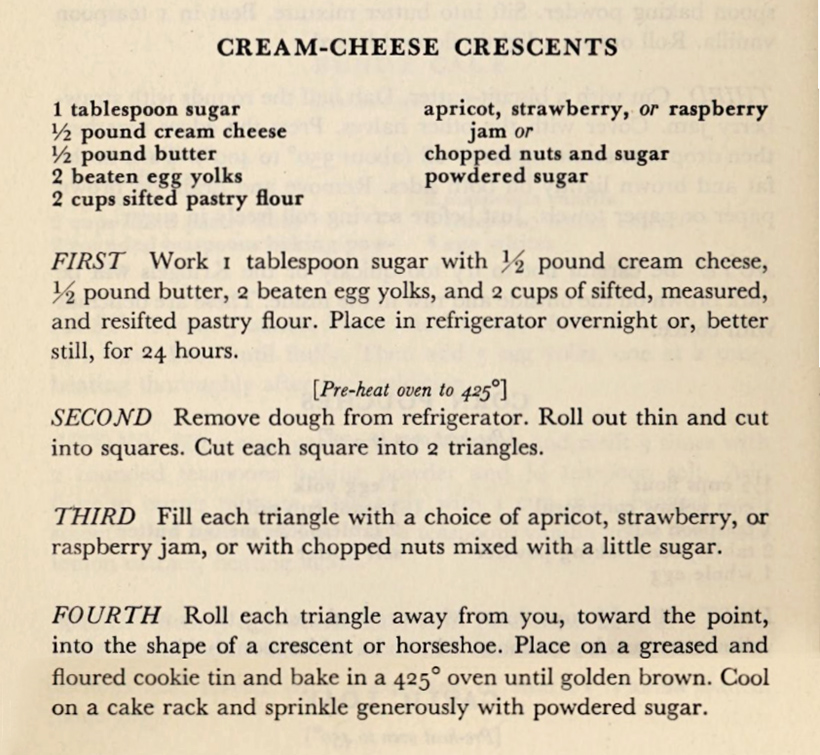
But that’s still too time-consuming for America, so many replace the traditional crescent with a plain rectangular shape, which also allows for a greater concentration of filling. The metamorphosis into a heavy little deformed cookie is complete, and you’d have to be both blind and anosmic not to notice the difference with the original.
Meanwhile, in Israel, European émigrés think it’s still worth using yeast dough, and their rugelach (same Yiddish name, different product) soon becomes available in all the bakeries and grocery stores. In fact, some fancy bakers even start using a laminated yeast dough (just like in French croissants), making the preparation even more time-consuming. As for the fillings, classic options include chocolate, poppy seed, cinnamon, or halva. In NYC, you can find this kind of rugelach at Breads Bakery, founded by Israeli baker Uri Scheft.
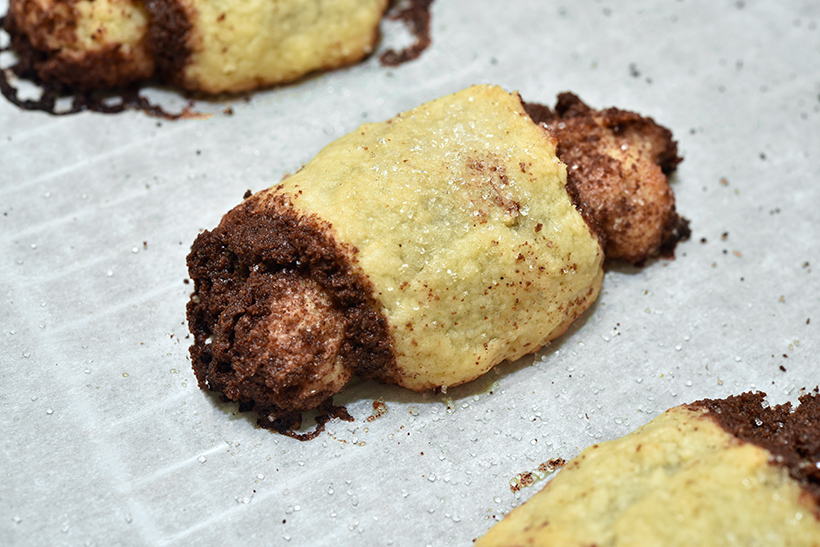
I don’t plan to cover every single variation on kipferl and rugelach. (Maybe I’ll write more posts in the future!) No laminated dough today, though I have nothing against it. Instead, I’m focusing on the Polish rogalik and the New York rugelach. Because, yes, that mutant shapeless cookie can be delicious. As you’ll see, I’m covering both versions pretty extensively. I’ve made countless batches to determine the best proportions and pairings, and I’m presenting the dough and filling recipes separately so you can mix and match.
It boggles the mind to see how many terrible dough recipes circulate in cookbooks and blogs for something as simple as a rugelach. I started my experiments with the recipe from George Greenstein’s The Jewish Baker’s Pastry Secrets. Surely, an award-winning Jewish baker would have a fabulous rugelach recipe, right? Nope. Greenstein’s needlessly complicated ingredient list, which calls for two types of flour, baking powder, cream cheese, butter, egg, sugar, salt, and vanilla extract, produces a dough that’s very hard to roll and sags tremendously when baked, for no benefit. Meanwhile, the good old New York Times has it all figured out and uses a mere four ingredients, with vastly superior results (note that recipe is written by Dorie Greenspan; not everybody can compare to Dorie Greenspan). For Polish rogalik, I started with a recipe in the critically acclaimed Polska: New Polish Cooking. I don’t know what all those critics acclaim but it’s probably not the recipe on page 40: the author has no clue how to make a yeast dough (my favorite phrase is “put this ball of dough into a large pan or container filled with warm water”; well, the book cover did promise “a revolutionary style of cooking”!), the baking time is off by 25 minutes, and the result is thoroughly mediocre. And don’t get me started about the clowns who recommend that you order entire sacks of some random Canadian flour – for my rants about flour, just read my recipe posts here and here. At least George the Jewish Baker may have an excuse for his questionable recipe: he died before finishing it; his family published the book.

As for the fillings, I didn’t want to stick to the classics, so I came up with several interesting pairings of my own, often combining traditional flavors with new ones. Every pairing consists of a combination of three elements (which, for lack of better terms, I refer to as spread, crumbled solids, and flavored sugar), each centered around one ingredient. Then recipe templates for rogalik and rugelach explain how to use the combinations. If the pastries still don’t look as nice as some of Instagram’s masterpieces, that’s because I’m cramming them with as much filling as I can. You can make them prettier with less filling, but if you ask me, they won’t taste as good.
One last note for the linguists: in their languages of origin, rugelach is plural, whereas rogalik is singular (the Polish plural would be rogaliki).
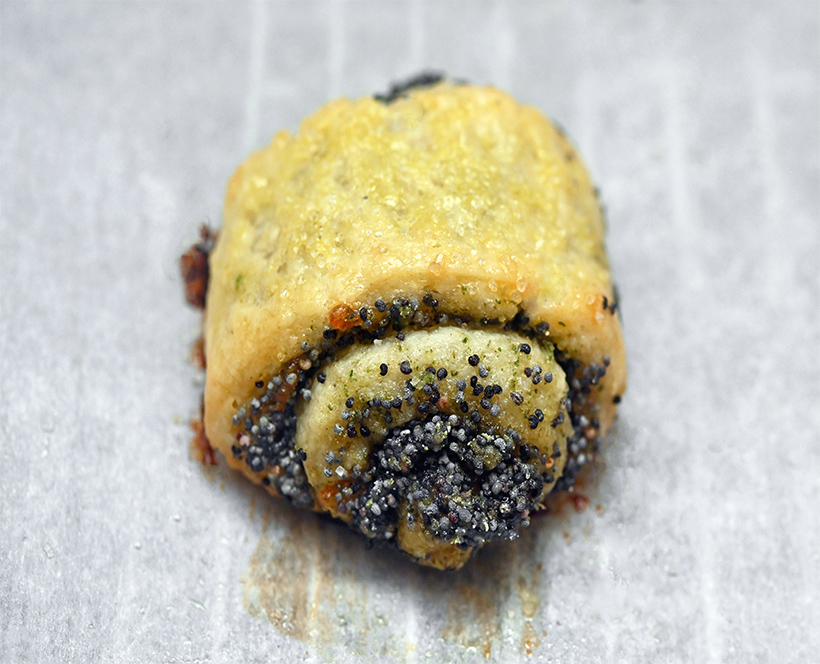
Looking at the sections below, you’ll want to A) choose between rogalik and rugelach; B) choose a pairing. Armed with these templates, feel free to create your own pairings too!
Rogaliki
Rogalik dough
Yields about 20 rolls
6 g active dry yeast
85 g milk, lukewarm
45 g sugar
75 g eggs
4 g pure vanilla extract
110 g AP flour
110 g butter, medium dice, soft
110 g bread flour
1.5 g salt
- In a small bowl, combine the yeast, milk, and 1/3 of the sugar, and set aside for 5 minutes.
- In the bowl of an electric mixer fitted with the paddle attachment, beat the rest of the sugar with the eggs and vanilla extract on medium speed just until combined, then add the yeast mixture.
- With the mixer still on, add the AP flour, then the butter, then the bread flour and salt. Once it comes together, continue mixing for another 3 minutes. Cover and let rise until doubled in volume, about 1 hour.
- Refrigerate the dough for at least 30 minutes (overnight is okay too); it will become much easier to work with.
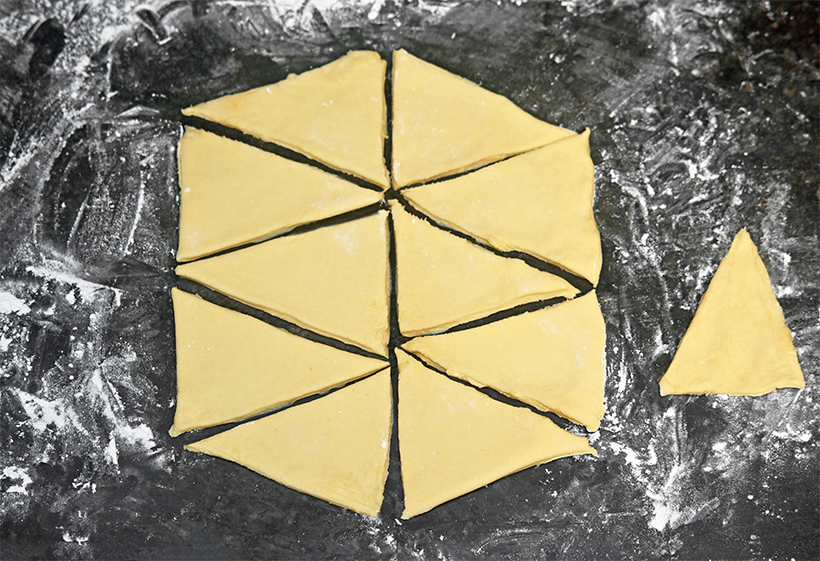
Rogalik assembly
Yields about 20 rolls
rogalik dough
flour (for dusting)
one combination of spread, crumbled solids, and flavored sugar (see below)
15 g egg yolk
20 g milk
- Divide the dough into halves to proceed in batches, keeping the other half covered. On a floured surface, use a rolling pin to roll each dough-half to a 27 cm x 24 cm rectangle. Cut lengthwise into two 27 cm x 12 cm rectangles, then cut each rectangle into five triangles that are about 12 cm tall and 9 cm wide at their base (see drawing below). Out of each dough half, you’ll get 10 triangles. You can reuse the trimmings to form 1 or 2 more triangles if you want (but you’ll need to come up with some extra filling for them).
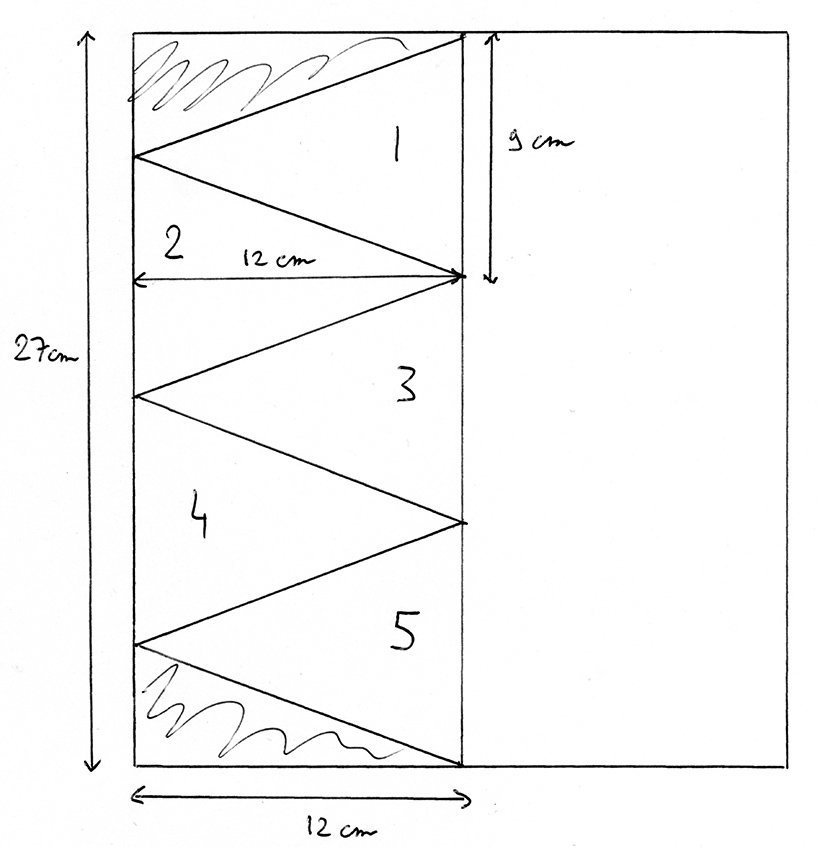
- Cover all the triangles with the spread, then sprinkle with the flavored sugar. Press gently.
- Distribute the crumbled solids in little mounds near the base of each triangle, and roll tightly into a crescent, starting by folding the base over the filling then continuing to roll. Curve the ends to shape like a crescent, and transfer to a baking sheet lined with parchment paper.
- Proof the pastries in a warm place for 30-45 minutes, until they start to look a bit bigger. Reshape (curve, pinch) gently – keep in mind that if you touch them too much, they will be less airy. Mix the egg yolk and milk in a small bowl to make an egg wash, and brush over each rogalik.
- Bake in 175 C / 350 F oven for 18-20 minutes, to an internal temp of 93 C / 200 F, then cool on a rack for a few minutes. Rogaliki are best eaten warm.
Rugelach
Rugelach dough
Yields about 20 pieces
170 g cream cheese, soft
180 g AP flour
170 g butter, medium dice, soft
20 g sugar
1.5 g salt
- In the bowl of an electric mixer fitted with the paddle attachment, combine the cream cheese, AP flour, butter, sugar, and salt. Mix on low speed until the dough is just smooth – it’s OK if there are still some small lumps of butter.
- Using a rolling pin, roll to a 25 cm x 30 cm rectangle between two pieces of parchment paper. Try to make it as perfect a rectangle as possible, cutting and pasting bits of dough if necessary. Refrigerate (still in the parchment paper) for 2 hours.
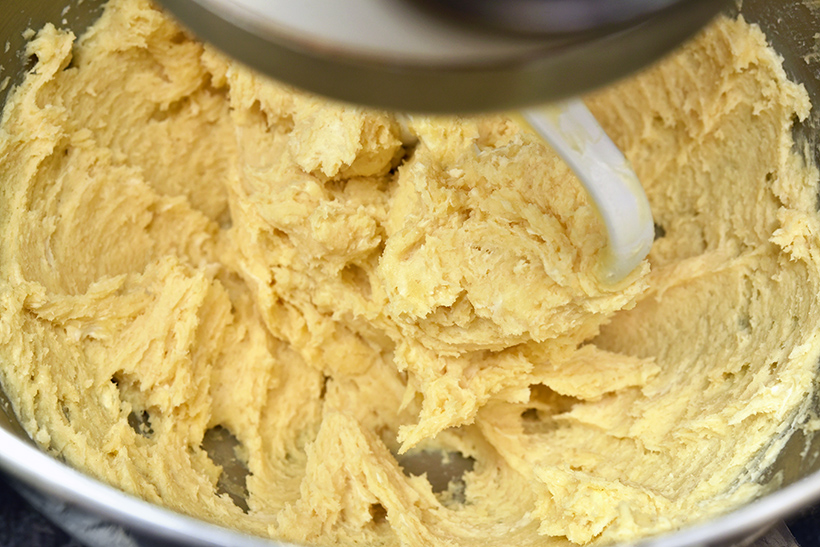
Rugelach assembly
Yields about 20 pieces
one combination of spread, crumbled solids, and flavored sugar (see below)
rugelach dough
flour (for dusting)
15 g egg yolk
20 g milk
10 g sugar
- Refrigerate the crumbled solids and flavored sugar for at least 30 minutes.
- Re-roll the dough to a 25 x 30 cm rectangle on a floured surface, as it will have shrunk a little bit when cooled. Again, make sure it’s a perfect rectangle, especially in the corners. Cut lengthwise into two 25 x 15 cm rectangles. Proceed in batches, keeping the other half in the fridge.
- Cover each rectangle with spread, then sprinkle with the crumbled solids, followed by the flavored sugar. Gently press the filling into the dough with your hands. Cut into twelve 2.5 cm x 12.5 cm strips (see drawing below).

- Roll each strip tightly, then place seam side down on a baking sheet lined with parchment paper. Pinch the rugelach to give them a tall shape. Chill for 20-30 minutes in the refrigerator.
- Mix the egg yolk and milk in a small bowl to make an egg wash, brush over each rugelach, and sprinkle with sugar. Bake in a 175 C / 350 F oven for 20-25 minutes, to an internal temp of 93 C / 200 F, then let cool on a rack.
- If you don’t eat them all as soon as they’ve cooled, you can keep the rugelach in a container lined with paper towels for up to a week.
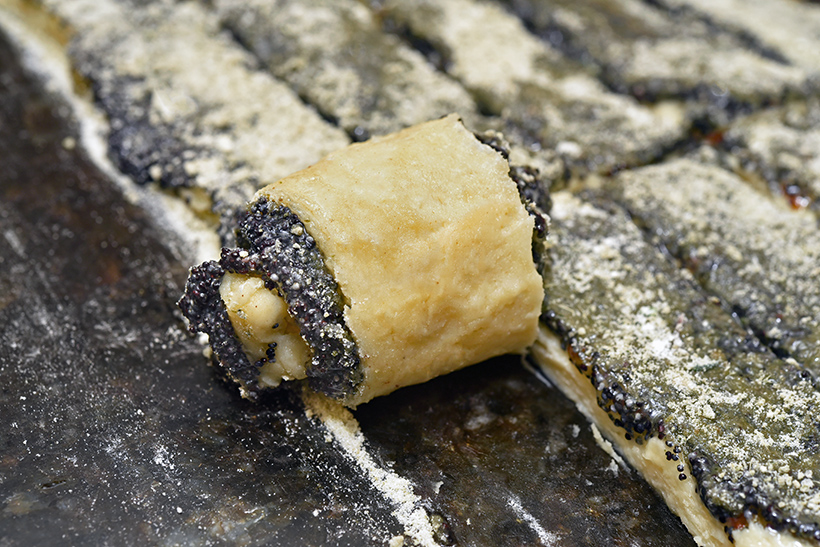
Pairings
Pairing #1: orange marmalade – poppy seeds – thyme sugar
Orange marmalade
Yields about 160 g
160 g orange marmalade
- Microwave the marmalade for a few seconds to make it more spreadable.
Poppy seeds
Yields about 80 g
80 g poppy seeds
- Nothing to do.
Thyme sugar
Yields about 65 g
65 g sugar
3 g thyme leaves
- Process the sugar and thyme leaves in blender or grain mill.
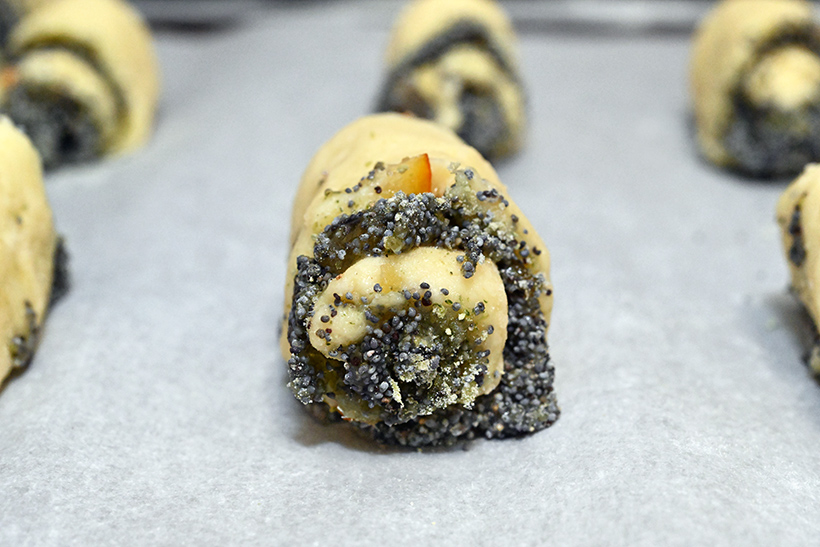
Pairing #2: lilac jelly – almond frangipane – vanilla sugar
Lilac jelly
Yields 120 g
120 g lilac jelly (available on Etsy)
- Microwave the jelly for a few seconds to make it more spreadable.
Almond frangipane
Yields 130 g
20 g butter, room temperature
60 g almond flour
40 g confectioners’ sugar
20 g egg, beaten
- In a bowl, use a spatula to combine the butter, almond flour, and confectioners’ sugar until smooth, then mix in the egg. Refrigerate for 30 minutes.
- Crumble the frangipane between your fingers before use.
Vanilla sugar
Yields 60 g
60 vanilla sugar
- Nothing to do.
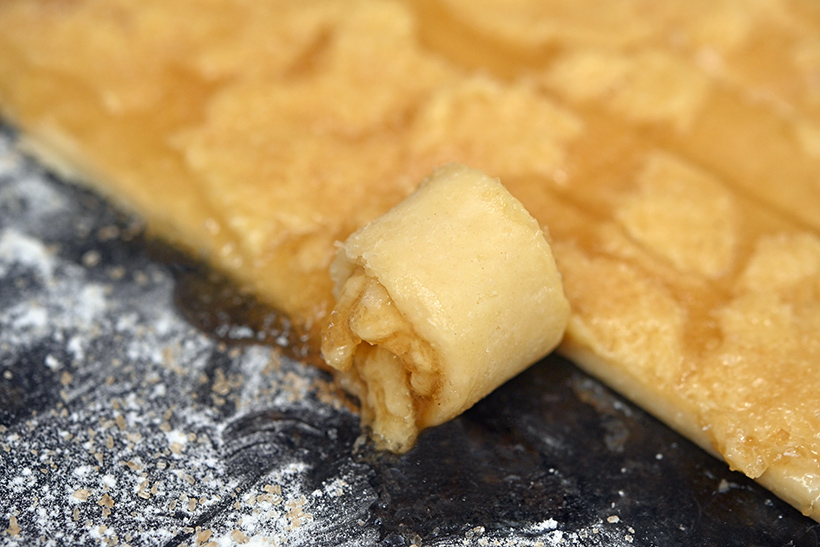
Pairing #3: blackcurrant preserves – red beet – cinnamon sugar
Blackcurrant preserves
Yields 160 g
160 g blackcurrant preserves
- Microwave the preserves for a few seconds to make them more spreadable.
Cooked red beet
Yields 120 g
120 g cooked red beet
- Cut the beet into a brunoise, then drain on paper towels for at least 15 minutes.
Cinnamon sugar
Yields about 50 g
50 g sugar
2.5 g ground cinnamon
- Combine the sugar and cinnamon in a plastic container, close, and shake well.
Pairing #4: chocolate – bird cherry crumbs – cocoa sugar
Melted chocolate
Yields about 140 g
120 g semisweet (65%) chocolate, diced
40 g heavy cream
- Place the chocolate and cream in a container, microwave for 1 minute, and mix with a spatula. If the chocolate isn’t fully melted, microwave a bit longer. Let cool for a couple minutes.
Bird cherry cake crumbs
Yields about 140 g
50 g milk
40 g bird cherry flour (available on Amazon)
40 g egg
25 g sugar
25 g dark brown sugar
40 g AP flour
0.5 g salt
3 g baking powder
40 g butter, softened
- Bring the milk to a simmer in a small saucepan over medium heat (or in the microwave), then pour over the bird cherry flour in a bowl. Stir, and let rest for 30 minutes.
- In the bowl of an electric mixer fitted with the paddle attachment, beat the egg, sugar, and dark brown sugar on medium speed just enough to combine, scraping the bowl with a spatula.
- Combine the flour, salt, and baking powder in a container, then add to the egg mixture, with the mixer still on medium speed. Switch to low speed, and add the butter, followed by the bird cherry mixture, each time mixing just enough to combine, and scraping the sides of the bowl with a spatula as needed.
- Line a baking sheet with parchment paper. Spread the batter into a 20 cm square, and bake in a 175 C / 350 F oven for 8 minutes, until the cake’s internal temperature reaches 100 C / 210 F. Let cool on a rack for about 15 minutes.
- Crumble the cake onto the same baking sheet lined with a new piece of parchment paper, and bake at 150 F / 300 F for another 15 minutes. Let cool on the baking sheet.
- Transfer the cake pieces to a blender or food processor, and process to fine crumbs. Measure 140 g and discard (or eat) the rest.
Cocoa sugar
Yields about 75 g
70 g sugar
5 g Dutch process cocoa powder
- Combine the sugar and cocoa powder in a plastic container, close, and shake well.
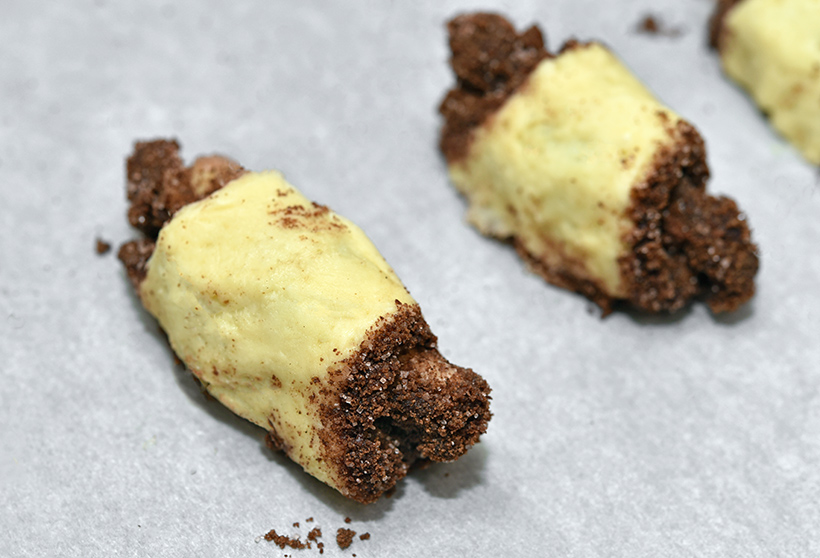
Pairing #5: prune lekvár – bacon – star anise sugar
Prune lekvár
Yields 180 g
140 g pitted prunes, halved
140 g water
30 g sugar
- In a small, uncovered saucepan over medium heat, simmer the prunes and water until the liquid is almost fully reduced.
- Transfer to a blender, add the sugar, and process until smooth. If the paste is so thick that it can’t be spread easily, add some more water. Let cool and refrigerate.
Fried bacon
Yields 100 g
200 g bacon, brunoise
- Fry the bacon in a pan over medium heat until it starts to color, then drain on paper towels and let cool for a few minutes.
- Measure 100 g and discard (or eat) the rest.
Star anise sugar
Yields about 50 g
50 g sugar
1 g ground star anise
- Combine the sugar and ground star anise in a plastic container, close, and shake well.

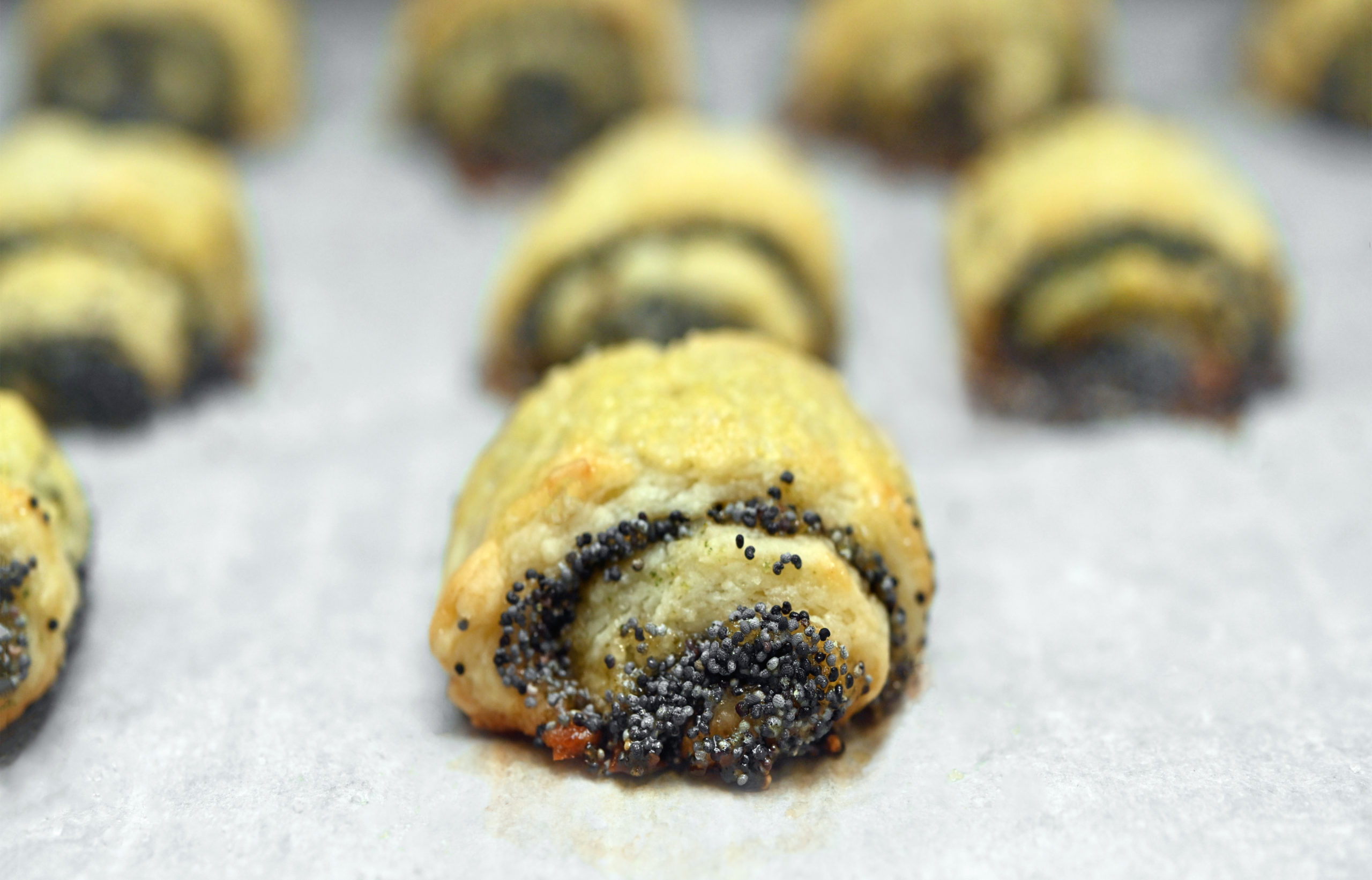









1 comment
Thanks For Sharing this Amazing Recipe. My Family Loved It. I will be sharing this Recipe with my Friends. Hope They will like it.